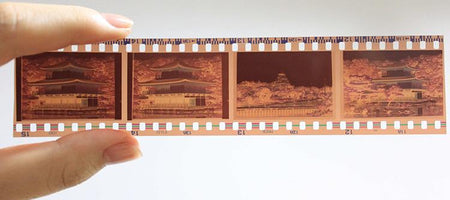With streaming music, it seems we have reached the pinnacle of music recording and playback, but where did it all begin?
The recording of sound has a long and storied history!
While many think it begins with the Wizard of Menlo Park, it actually begins in Paris.
The Phonautograph
Before Thomas Edison invented the phonograph, the phonautograph was patented in 1857 Paris by a man named Édouard-Léon Scott de Martinville, a French printer, bookseller, and inventor. He created a machine that could record sound on a piece of paper called a phonoautogram. The phonautogram recorded sound waves with a stylus that cut through layers of soot on paper. While this ingenious device was a landmark in the history of sound recording, it unfortunately could not play the sound back. In 1860, a phonautogram produced a recording of “Au Claire de Lune,” a common French folk song. Using modern technology, in 2008, scientists were able to reproduce the 1860 phonautogram by scanning it into a computer and allowing modern software to translate the sound waves into music. Monsieur de Martinville would be proud of such ingenuity!
The Wizard of Menlo Park
In 1877, across the pond in America, Thomas Edison was working on his own sound recording machine. He was able to patent his invention in 1878. Edison was able to record and reproduce audio on phonograph cylinders, objects that had recordings etched into foil wrapped around them that would be read by the phonograph on playback. The first sound he ever recorded was, “Mary had a little lamb. Its fleece was white as snow. Everywhere that Mary went the lamb was sure to go,” because who doesn’t love some classic Mother Goose? Despite the clarity being poor and the medium lacking durability, Edison became a sensation. The invention seeming almost magical, he earned the name “Wizard of Menlo Park.”
Improvements to the Phonograph
As Edison moved on to bigger and better things, like electricity and his famous rivalry with Nikola Tesla, the development of the phonograph stalled for a time until Alexander Graham Bell, Chichester Bell, and Charles Tainter took on the adventure of improving the phonograph. Intending to increase the durability of the cylinders and their etchings, the inventors created a cylinder made from wax, a far stronger option than tin foil, to be sure! These cylinders were played back on a machine deemed a “graphophone,” because a fellow needs to make his invention his own, right? While these machines became an immediate success, they were actually not popular for playing back music. Instead, they became popular dictating machines for the important thinkers of the day.
A Race to Record
As the 19th century went on, Edison, Bell, and Emile Berliner competed to find the best method of recording, best materials to record on, and the most efficient way to produce playback. The inventors used a number of materials including glass, beeswax, and brass in their quest for making the recording process easier to repeat and reproduce for mass consumption. Berliner finally found success by patenting another reinvention, the “gramophone,” and the flat disc record in 1887. This is the record player we are familiar with today, which uses a stylus that skims through a groove. In 1888 Berliner introduced records which were made from stamps, so that these 5-inch rubber discs could be mass-produced. By 1890, Berliner was producing these machines and their records in Germany. As the say: “The rest is history.”
A Recorded History
Many of the earliest audio recordings are housed at the Smithsonian Museum right here in the United States! Modern technology is allowing scientists to translate these recordings, so even though we have come a long way, there are still mysteries to uncover! You might even have a few mysteries of your own to discover! While you may not have any wax cylinders in your audio collection, you might have some old audio reels, and at Southtree, getting your audio converted to a CD, thumb drive, or digital download doesn’t require Smithsonian science! It’s simple and easy, and you’ll be listening to all your old favorites in no time!













